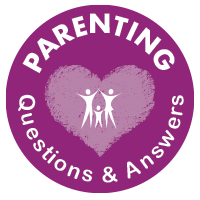Catch Your Child Being Good!
Praise your daughter every time she is friendly, gentle, uses a soft touch, shares, etc. with her younger sibling.
Try to be specific with your praise. Instead of praising for playing nice, provide detailed praise by including specific actions: “Nice sharing!”, or include more detail for older children: “That was so nice how you shared your red block with your brother, great job!”.
Blow the Whistle
Physically intervene (whenever possible!) before hitting happens or interrupt the behaviour as it is happening and redirect your child by calmly and gently diverting your child’s hand and placing it on her lap, narrate the event that occurred and offer other solutions: “It seems you were upset because you brother took your toy, let’s try to find a different one”. You may need to keep redirecting if the behaviour has occurred frequently in the past or the behaviour persists.
Discuss at a Calm Time
Refrain from discussing hitting behavior immediately after a hitting incident has occurred, as your child is likely to be frustrated and less receptive to explanations. These lessons can be taught at a different time! For instance, schedule “teaching moments” to teach problem-solving skills and discuss why hitting behaviour is bad and provide more positive options. A great way to do this is by putting on a puppet show or creating a story. Be sure to include plenty of feelings words in your productions!
If your child is three or older you can implement time-out for unsafe behaviours (behaviours that will harm self or others).
Plan Ahead!
Be sure to discuss with your child the specific behaviours that will result in a time-out, before these behaviours occur and practice time-out procedures before your child misbehaves. This way, she will know what to expect. Role-plays are a great way of doing this and you can take this opportunity to show your child that time-out is a space where she can calm down by practicing coping skills (deep breathing, muscle relaxation).
Note: Time-outs should only be reserved for select behaviours (often ones that would result in physical harm). If you find yourself using time-out multiple times a day, your time-out behaviour list may be too long, and time-out may lose its effectiveness. Instead of time-out, try giving praise for desired behaviours and ignoring undesired behaviours.
A Summary for Feisty Toddlers…
Teaching kids to behave in a calm manner when angry takes time and patience. Little ones experience big emotions and often don’t have the words to express themselves effectively. By modeling calm behaviour yourself, you can help teach them how to navigate intense feelings. Don’t be afraid to take a time-out yourself if you need one! This can set a good example for your children.

This post is part of the blog series "Parenting Q&A".
Do you need parenting advice? Please click below to submit your own question:
MORE POSTS IN THE SERIES











